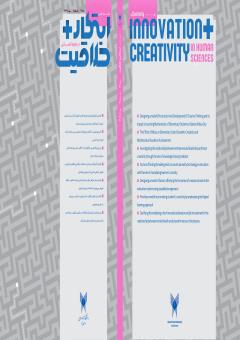Proposing The Model Of Instruction And Development Of Creative Thinking and its Impact on Learning Mathematics of Elementary Students in Bandar Abbas City
Subject Areas : Methods and technics of creativity and innovation, creativity and innovation engineering.
1 - Assistant professor, Department of Mathematics Education, Farhangian University,Tehran,Iran
Keywords: Keywords: teaching creative thinking, learning, communicating, experiencing, ,
Abstract :
Background: The changing and increasing development of technology has affected the educational systems, and to coordinate with these changes, teachers must reconsider their teaching methods. They should use methods that make learners think and lead them to thinking. Improving and promoting creative thinking in students, as one of the skills needed in the age of communication, requires the appropriateness and application of new educational design patterns and methods. Purpose: The purpose of this research is to design a teaching model and develop creative thinking and its effect on the mathematical learning of elementary school students in Bandar Abbas city. Method: The research design was a semi-experimental pre-test-post-test type with a control group. The statistical population included all female students in the fourth grade of Bandar Abbas city in the academic year of 2014-2016.The research sample included 60 female students who were selected by multi-stage cluster sampling method and were randomly replaced in two classes of 30 students, experimental and control. The students of the experimental group received the creative thinking skill training model based on the REACT strategy (Crawford, 2001) for the subject of fractions (addition, subtraction, multiplication and division) and decimal numbers (division) for 8 sessions of 45 minutes for 6 weeks. The students of the control group were not subjected to this training. The pre-test and post-test measurement tools were the fourth grade standard math test, which was a sample of exam questions approved by Bandar Abbas Education. Findings: The results of multivariate covariance analysis showed that there is a significant difference between the experimental and control groups in the implementation of the model of teaching and development of creative thinking on students' mathematical learning and the components of creative thinking in the post-test stage (p>0.05).Conclusion: Also, the results showed that the classroom in the teaching model of creative thinking development, compared to the traditional classroom, had a more positive effect on the amount of students' mathematical learning


